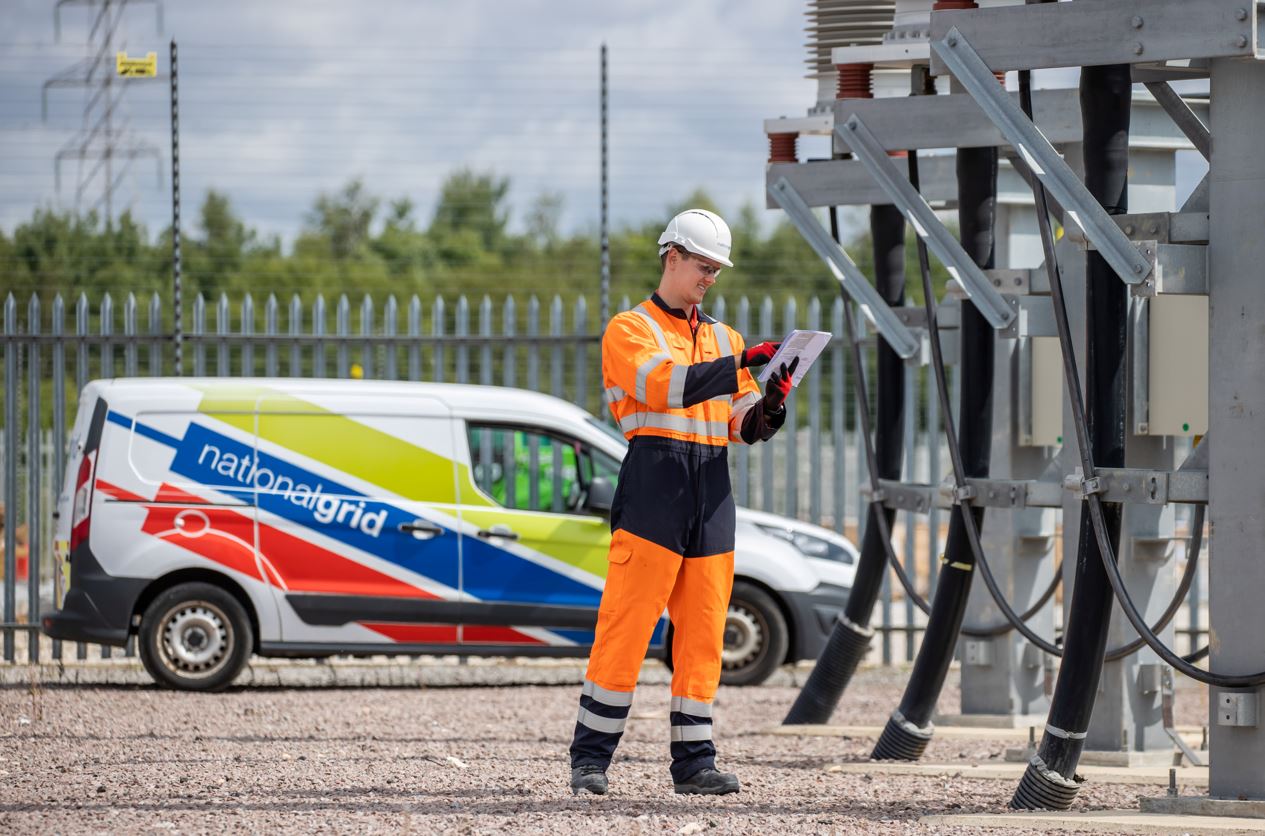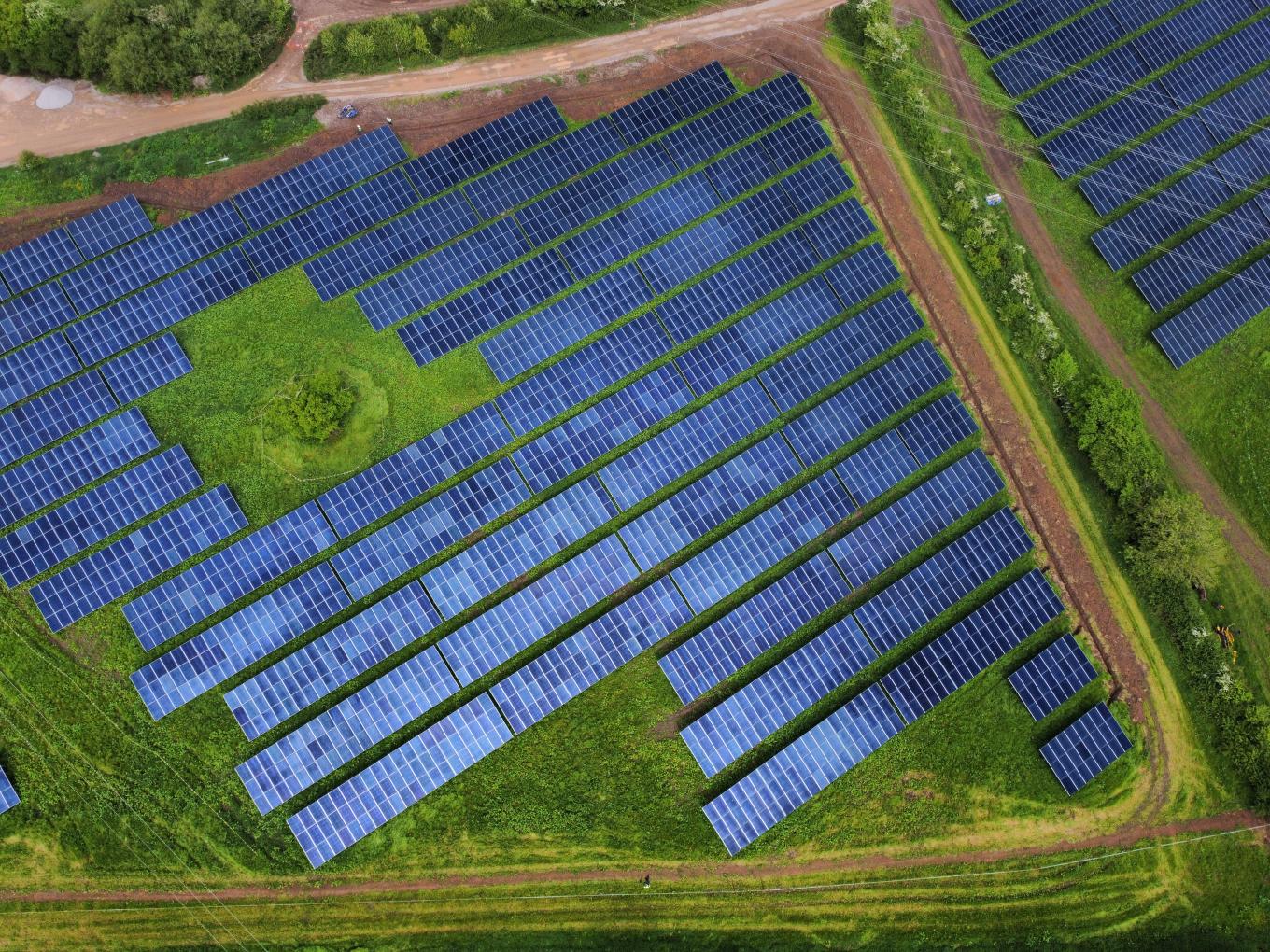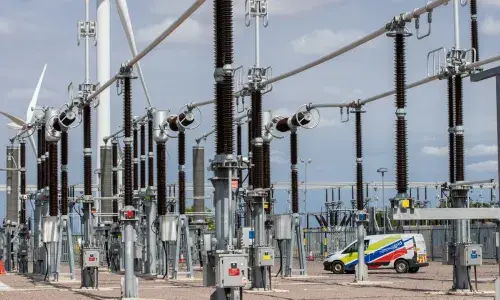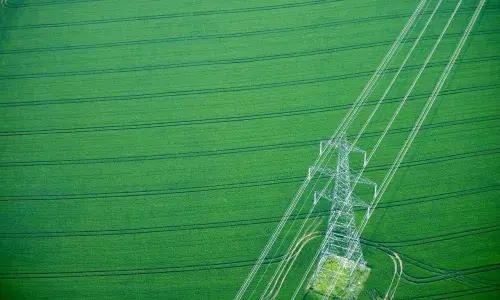
We’re at a critical and exciting juncture in the road to net zero – reflections on 2023 and a look ahead to next year
National Grid Electricity Transmission President Alice Delahunty reflects on the progress made in decarbonising our network in 2023 and looks ahead at priorities for next year.
2023 is drawing to a close, which makes it a good time to reflect on the great progress made over the last year and to look ahead at the one to come.
This was the year we announced the largest overhaul of the grid in generations, which will enable millions of UK homes and businesses to use renewable energy to power the things they need and love in years to come.
We’ve also connected huge low carbon power projects to the grid, and we’ve released gigawatts of capacity in the pipeline. We’ve influenced changes that will make it easier for us to deliver for customers who really want to get connected.
And whilst all this great work has been happening, teams across our entire organisation have been working hard to maintain and run one of the most reliable networks in the world, ensuring it is safe and secure. Thank you to all who will be on standby or working safely and diligently throughout this holiday period to keep the lights on.
2024 will be another important year for the energy transition. A continued focus will be on how we can think differently about the design of the network to meet future needs.
This is a critical and incredibly exciting juncture in the road to net zero. This is our opportunity to deliver something extraordinary, on a scale we haven’t seen since the grid was built.
Our assets will be there long after 2050 and we must design fit for that future. This isn’t just about building more of the same faster than we ever have, we must design and build the ‘Supergrid 2.0’ to deliver both the increased capacity and enhanced capability and intelligence needed of our network in the future.
We are at the forefront of the UK’s decarbonisation journey, facilitating and driving the transition to a clean, fair and affordable energy future. Our work will continue to be driven by the need to turn these pivotal goals into a reality, whilst securing a resilient network for generations to come.
It’s very difficult to pick out this year’s key highlights but I mention a few below.
We’re plugging in and accelerating the connection of scores of clean energy projects
- We connected what will become the largest offshore wind farm in the world to our electricity transmission network earlier this year, following work to extend our Creyke Beck substation in Yorkshire. The 1.2GW connection allowed Dogger Bank – which will be fully operational next year – to start producing electricity for the first time in October, marking a major milestone in the development of offshore wind power and the transition to a cleaner, more secure energy system
- As part of the Electricity System Operator (ESO)’s connections five-point plan and our ongoing collaborative work across industry, we are accelerating the connection of up to 10GW of clean energy projects to our electricity transmission network in England and Wales. 19 battery energy storage projects will be offered dates to plug in to our network averaging four years earlier than their current agreement.

- In July we completed a multi-year project with Transport for Wales to electrify its historic Core Valleys Lines, which involved upgrading our Upper Boat substation in Pontypridd with two new 100 tonne traction transformers and connecting two new circuits. The connection is boosting the Welsh government’s plan for a South Wales Metro, and enabling the rail operator to replace noisy and less environmentally friendly diesel trains with faster, greener, battery-electric hybrid solutions for the first time.
- And back in the summer we connected the UK’s first transmission-connected solar farm, the 50MW Larks Green solar array, to our Iron Acton substation near Bristol. This was a key landmark in the renewable energy transition, allowing solar-generated power to be transported at higher voltages and over greater distances for the first time.
We’re continuing to invest in and expand our network for future needs, while maintaining resilience
- Our London Power Tunnels Project celebrated a major milestone with its final tunnelling breakthrough at Eltham substation in Greenwich, completing 35.5km of tunnelling at depths of up to 60m under seven South London boroughs. Due for completion in 2026, the £1 billion project is rewiring London’s electricity network, ensuring it safely, reliably and efficiently continues to power homes and businesses in the capital for years to come.
- We’ve erected all 116 world-first T-pylons as part of the £900 million Hinkley Connection project, which will connect six million homes and businesses in the South West to home grown, low-carbon energy and help the UK meet its net zero 2050 target. Earlier in the year, we also successfully energised 36 of the new T-pylons which are now powering homes and businesses in Somerset and across England and Wales.
- We’ve also made significant progress on our £130 million project to refurbish and strengthen the existing overhead line network between Lincoln and Stevenage. Engineers have installed a total of 2,919km of new overhead line conductor working at heights of up to 50m, clocking up 78 calendar years of combined working hours. With the project due for completion in 2024, this work forms part of our £1 billion annual investment in maintaining and upgrading our infrastructure to ensure a resilient and reliable network for homes and businesses in England and Wales.
We’re playing our part to address the UK’s green skills gap and develop the future net zero workforce

- It was a privilege to take part in the Girls Takeover earlier this year, when 15-year old Precious took over my role as President of National Grid Electricity Transmission for the day. Precious oversaw The Great Grid Upgrade, chairing an NGET board meeting and steering an employee resource group session aimed at fostering a more inclusive workplace for women with STEM skills. She also visited National Grid’s flagship training centre in Eakring, where she climbed a 150ft pylon and took part in a helicopter flight to review a potential transmission route for The Great Grid Upgrade.
- Our £1.3m partnership with social enterprise Connectr, launched as part of the London Power Tunnels project, achieved a significant milestone, reaching more than 85,000 students across 168 London schools through its Schools Engagement Programme. This is part of our ongoing commitment to help the UK plug its green skills gap and inspire the next generation of STEM leaders.
And we’re continuing to support our communities
- We have continued to support the communities in which we operate, partnering with charity organisations and encouraging our employees to support social, economic and environmental development. In the summer, London Power Tunnels announced that so far, the project has bolstered community organisations and charities across South London with a total of £220,205 in funding, committed through National Grid’s Community Grant Programme (CGP).
- We recently celebrated the opening of the Strawberry Line’s new Sandford Link, built by National Grid as part of the construction of its new Sandford substation, which is part of the Hinkley Connection Project. This part of the Strawberry Line will now provide a safer travel route for the local community and encourage greener travel options.


